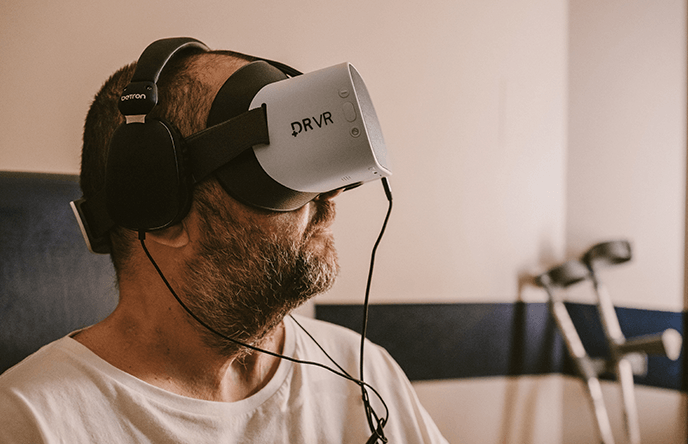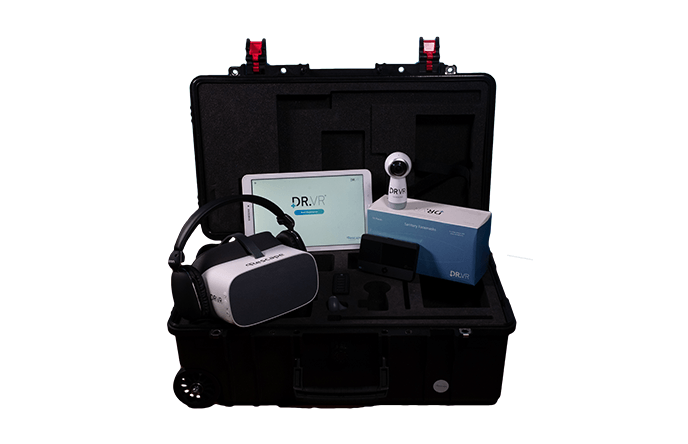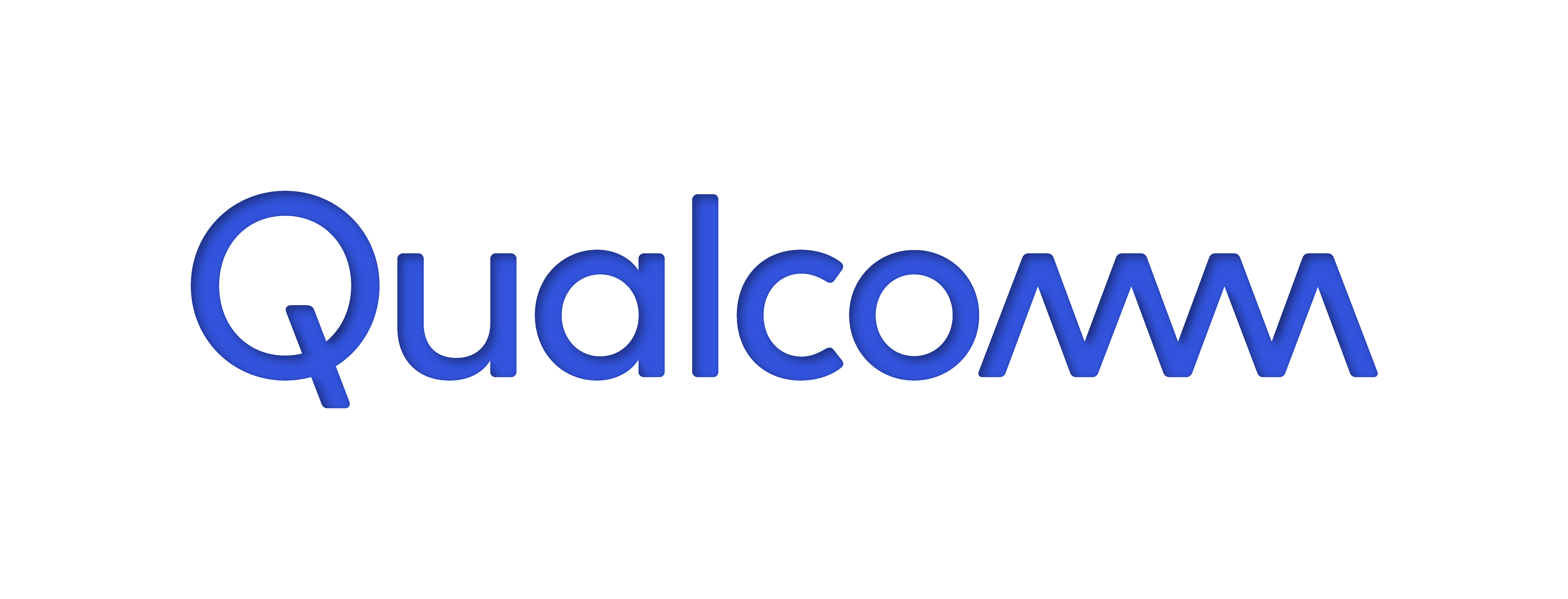VR Therapy: How Rescape Innovation Is Providing Emotional Support for COVID-19 Frontline Workers
While COVID-19 continues to spread, doctors, nurses, EMTs, and others on the frontlines are facing extreme stress in high-pressure environments. Experts warn that while these medical professionals are at increased risk for burnout and mental health issues, therapeutic support is lacking.
To help, Rescape Innovation, a U.K.-based company that develops VR experiences to ease pain, stress, and anxiety, is offering its technology to support the mental wellbeing of frontline workers during the pandemic. The company's all-in-one VR kit, DR.VR, is now deployed in ten NHS hospitals across the U.K., offering distraction therapy and mindfulness exercises. The kit includes a tablet, VR headset, sanitary eye masks, noise-cancelling headphones, and a carry case. Plus, its connectivity operates within a closed system for an optimal VR experience.
“We knew that our product can help reduce stress and anxiety, and we wanted to see if it could be adapted quickly to help the frontline staff whose mental health has been affected,” said Rescape CEO Matt Wordley.
Examining the effect VR therapy has on frontline workers
To kick off the initiative, Rescape worked with the Cwm Taf Morgannwg University Health Board and the Centre for Trials Research at Cardiff University to test a scaled-down version of DR.VR for hospital staff. The content available for this version of the kit included guided breathing exercises and immersive distraction therapy experiences, like swimming underwater and exploring a rainforest. For two weeks, 21 frontline workers used the kit at work, at home, and before or after their shifts.
Staff members reported that DR.VR was enjoyable to use and that they’d recommend it to colleagues to aid in relaxation and stress reduction. Since then, ten hospitals have signed up to provide VR for their frontline staff.
“We now hope to trial this on a much larger scale. We think it has real potential to help many more people and further our understanding of how VR can be used in the management of stress and anxiety,” said Dr. Kim Smallman, the Research Associate of Cardiff University’s Centre for Trials Research, in a press release.
Utilizing VR as distraction therapy
Rescape’s program for frontline healthcare workers is just the latest use for its VR technology. Since the company’s inception in 2018, children, patients who are needle-phobic, and those nervous about undergoing MRI scans have used DR.VR. After completing an experience, users sleep for longer periods of time, are more receptive to new information, and are significantly less anxious. And because VR is a non-intrusive alternative to opioids and other medications, users don’t experience debilitating side effects.
“When people practice mindfulness, it takes six to eight months before they see any benefits,” said Rescape Product Development Director Kevin Moss. “With VR, we see them access those same benefits far, far quicker. Those instant effects after people come out of VR, that’s really important.”
When developing the DR.VR kit, Rescape kept certain healthcare-specific challenges in mind, such as unreliable Wi-Fi connectivity in hospitals, infection control, VR inexperience for staff and patients, and the need to create immersive content that doesn’t induce motion sickness. To address these pain points, the company created a closed system that doesn’t depend on Wi-Fi and can be used anywhere within a hospital. It also included 50 VR sanitary eyes masks in each kit, as well as an easy-to-use tablet that enables healthcare professionals to control the content and gather data on patients’ experiences.
Rescape also counts on lightweight Pico G2 headsets to display its high-resolution VR experiences. Powered by the Qualcomm Snapdragon 835 Mobile Platform, the headset’s GPU delivers up to 25 percent faster graphics rendering and 60x more display colors when compared to its previous generation. The platform also supports 3 Degrees of Freedom (3DoF), allowing bedridden patients to immerse themselves by simply turning their heads or tilting up and down. A pair of noise-cancelling headphones completes the set, ensuring patients stay engaged without any distractions from reality. Altogether, this provides a more interactive and realistic VR experience.
Integrating 5G in the near future
5G opens up a variety of opportunities for companies like Rescape, including the potential to incorporate biometrics into the device and control the end-to-end communication between the tablet and the headset. And when 5G works together with on-device processing and edge cloud processing, new immersive experiences like boundless XR are possible, delivering sleek, photorealistic VR to headsets. With improved connectivity, Rescape can design larger, more detailed, and more intelligent VR content.
“People use VR because the content is amazing,” Wordley said. “5G will be a game changer in how much and how quickly content can be delivered.”
For now, Rescape is focused on perfecting its completely immersive VR for the millions of healthcare workers on the frontlines of the pandemic. “Our VR delivers amazing outcomes for patients,” he said. “We want to use that technology to make a huge social impact.”
Learn more about how the Qualcomm Snapdragon 835 Mobile Platform supports VR experiences.
Read our previous post on Mitchell International and its use of XR in auto repair.




